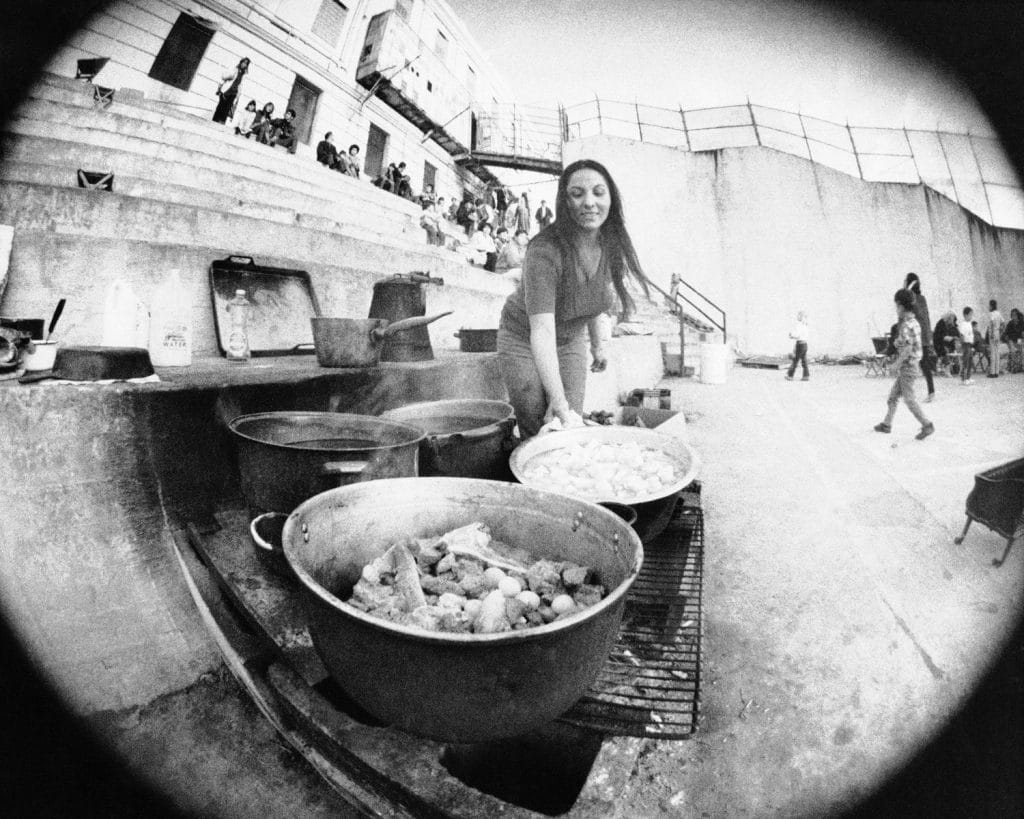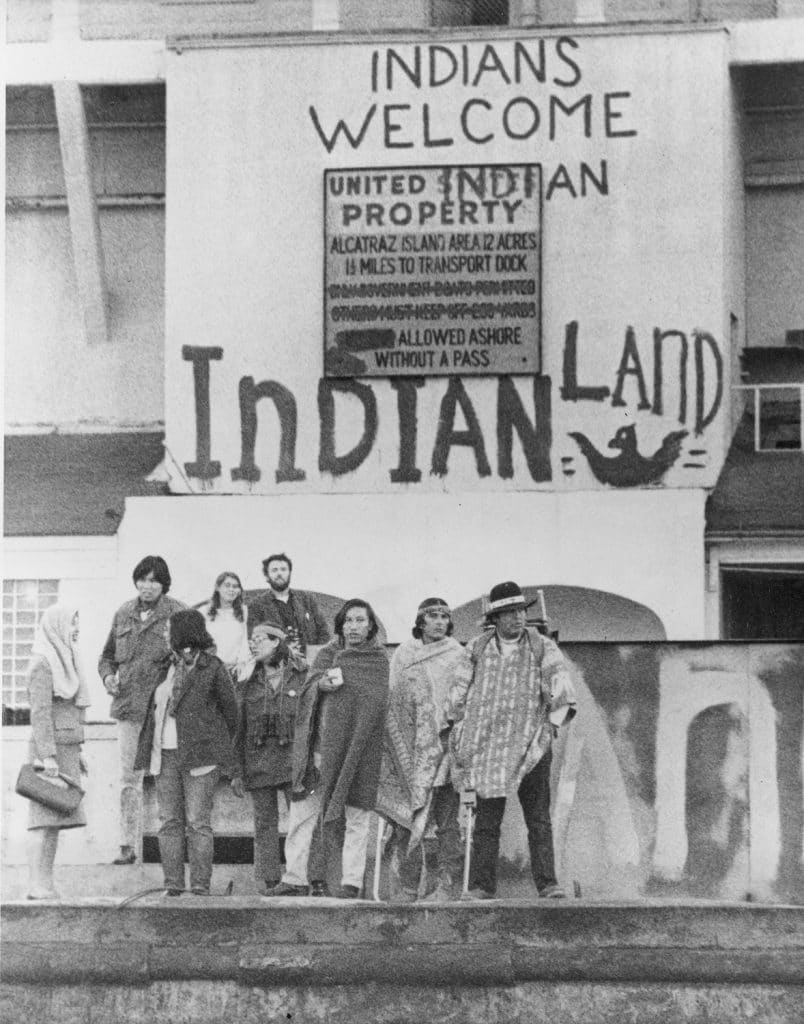A group of Native American stands under graffiti welcoming Indian occupiers to United Indian Property on the dock of Alcatraz Island
A group of Native American stands under graffiti welcoming Indian occupiers to United Indian Property on the dock of Alcatraz Island, Nov. 25, 1969. San Francisco Bay, California, Associated Press.
Background
Many civil rights movements of the 1960s and 1970s demanded equal citizenship under the law. By contrast, the indigenous civil rights movement demanded a separation from the law and a recognition of independence from colonization. After centuries of oppression and erasure, achieving sovereignty and maintaining cultural integrity were the goals of indigenous activists.
In 1963, the United States government closed the federal prison located on Alcatraz Island in San Francisco Bay. By 1964, the government declared the island part of its federal surplus. From November 1969 through June 1971, an organized group of hundreds of indigenous activists occupied Alcatraz Island. The group pointed out that the 1868 Treaty of Fort Laramie between the United States and the Sioux stated that any surplus federal lands would be returned to the indigenous people who once called it home. By this logic, Alcatraz Island rightly belonged to the Lakota. In addition to claiming control of the island, the occupiers also demanded the return of all stolen lands to their rightful owners.
The occupiers referred to themselves as Indians of All Tribes (IOAT) to reflect the multi-tribe coalition that formed on the island. The participants were primarily college and graduate students from California. They were led by Richard Oakes and LaNada War Jack, among others. LaNada War Jack was the first Native American student to attend the University of California Berkeley and the chairwoman of the campus Native American Student Organization.
Organizing a 19-month occupation required intense coordination. The island had no electricity and no running water. All supplies arrived by boat. Everyone had a job, and decisions were made by consensus. Women took on much of the day-to-day operations of the island, including management of the kitchen, school, day care, and health center. While this work was critical to the occupation’s success, the male leaders received the majority of the media attention.
In June 1971, the federal government forcefully removed the final occupiers from the island. Although they failed to hold onto Alcatraz, the protestors saw their efforts as a success. Public opinion and policy were significantly shaped by the occupation. President Richard Nixon signed several policies into law, including the Indian Self Determination and Education Act. In addition, the occupation served as the inspiration for many indigenous activists who soon took on greater leadership roles in the movement.
About the Image
This is a set of three photographs taken during the occupation of Alcatraz.
In the first image, 33-year-old Eldy Bratt walks through the Alcatraz prison with two of her children. Eldy Bratt was of indigenous Peruvian descent and aligned herself to the fight for North American indigenous rights.
In the second image, Berkeley resident Lorraine Parrish cooks stew in the main courtyard for a community celebration.
In the third image, a group of men and women gather under a graffiti sign welcoming occupiers to the island.
Vocabulary
- Alcatraz: An island located in San Francisco Bay that held a large federal prison between 1934 and 1963.
- colonization: The act of taking control of a geographic area and intentionally controlling or eliminating the indigenous people living within it.
- occupation: The act of occupying or holding a physical place by force.
- sovereignty: The ability of a group to govern itself.
Discussion Questions
- Why did Indians of All Nations occupy Alcatraz? What were their goals?
- What is happening in each of these images? What do they tell you about the occupation?
- What do these images tell you about some of the roles women played on the island?
- Why do you think men received more media attention and public credit than women during the occupation?
Suggested Activities
- AP Government Connection: 3.10: Social movements and equal protection
- Connect these resources to the wealth of other resources in WAMS that explore how indigenous women fought colonialism in American history: Life Story: Quashawam, Life Story: Weetamoo, Revolution in Art, Frontier Diplomacy, Life Story: Nanyehi Nancy Ward, Quapaw Masterpiece, Life Story: Toypurina, Native American Education and Family Separation, Life Story: Zitkala-Sa, and Life Story: Grace Thorpe.
- Grace Thorpe participated in the occupation and claimed it was a major factor in her decision to pursue a life of activism. Pair her life story with these photographs to deepen students’ understanding of the occupation’s importance for women activists.
- Many of the women who participated in occupation would play a role in the formation of Women of All Red Nations (WARN). Pair these photographs with the WARN poster in the next section to learn more.
- One of the protestors primary demands was the return of all stolen lands to their rightful owners. This is an important reminder of the fact that all of the United States exists on colonized land. Encourage students to learn about the original habitants of their community’s land by using this map.
Themes
AMERICAN IDENTITY AND CITIZENSHIP; ACTIVISM AND SOCIAL CHANGE









